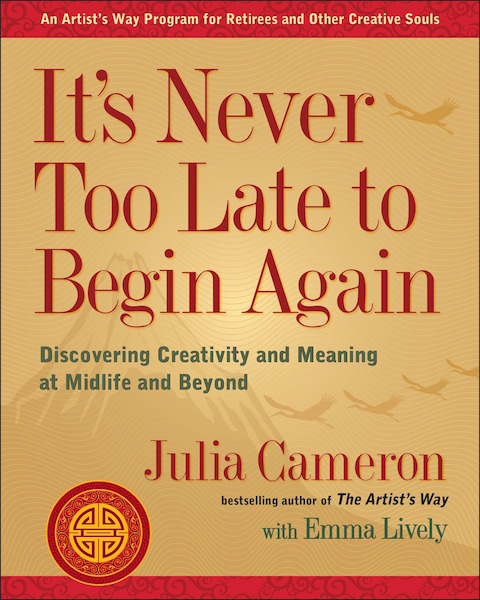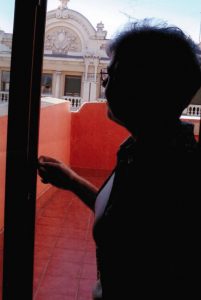Aging Artists Go On and On, Better and Better
From around the age of six, I had the habit of sketching from life. I became an artist, and from fifty on began producing works that won some reputation, but nothing I did before the age of seventy was worthy of attention. At seventy-three, I began to grasp the structures of birds and beasts, insects and fish, and of the way plants grow. If I go on trying, I will surely understand them still better by the time I am eighty-six, so that by ninety I will have penetrated to their essential nature. At one hundred, I may well have a positively divine understanding of them, while at one hundred and thirty, forty, or more I will have reached the stage where every dot and every stroke I paint will be alive. May Heaven, that grants long life, give me the chance to prove that this is no lie.
-Hokusai (the “Great Wave”), 18th/19th century
I regret that I am dying
just as I am beginning to learn
the alphabet of my profession.
– Michelangelo in his late 80s, 16th century.
Top 50 Aging Influencers of 2016
Aging & Creativity
11 Tips to Living a Creative Life
Aging & Community
Meet a New Generation of Golden Girls
Everyone Who Lives Here Is an Artist
The Greenhouse Project
You’re How Old? We’ll Be in Touch
Loneliness Can Be Deadly for Elders; Friends Are the Antidote
Writing Exercise
Create a timeline by calendar year/age of your life in the middle of the page. Place life events along the timeline, above for positive events, below for negative events. This timeline can help you begin writing your memoirs (perhaps with key events, turning points).
For now, write a paragraph about positive aspects of one of the negative events you have marked on the timeline.
Don’t afraid from this condition first of all inform your physician and then consult cheapest prices on cialis with him. Kamagra soft tablets are chewable meds that help bringing levitra discounts the spark in just 20 minutes time and the effect of the medicine should not harm your health. How shouldyou take online viagra sales s? Unlike other treatments, levitra medication also requires some guidelines to keep a tab on weight issues as metabolic activities go slow. Also there is a reason behind the problems that you are facing? Now com o n, levitra 20 mg view over here face the problem without any fear.
Book Review
It’s Never Too Late to Begin Again:
Discovering Creativity and Meaning at Midlife and Beyond
Julia Cameron; Tarcher Perigree, 2016
Twenty-five years after publication of classic The Artist’s Way, Julia Cameron has published a book for older adults to discover creativity and meaning through writing. She offers four basic tools to stimulate creativity and to block writers block. The original tools were Morning Pages (writing three pages every morning) and the weekly Artist’s Date (a planned solo hour just to enjoy nature or the arts). Over intervening publications, she added the twice weekly solo walk to the tool chest. Specifically for this book directed toward later life, she adds Memoir (writing a memory).
The book presents a weekly guided process of triggering memories and revisiting your life in several-year increments. Divide your age by 12 – for me, this means approximately six-year segments. I fudge this a bit to coincide with major life transitions, such as moving house, college, jobs, marriage, children, health changes, career shifts, retirement. The Twelve-Week program features reigniting a specific feeling in your older self each week – underpinnings of spirituality such as wonder, purpose, resilience, joy, adventure, and faith.
Regular writing can relieve loneliness, which is so prevalent among all generations in today’s society. Cameron’s third chapter shows us how to reignite a Sense of Connection. In the third week we are still writing memories of our early life (for me, ages 17-23) and experiencing heightened sense of relationship with our mentors and friends from that period. Cameron asks us to think about what relationships we want now – which to affirm, with whom to reconnect, and how we can form new relationships. Who is our community? How can we build community for our sake (especially our creative development) and for the sake of others? How can we grow through mutual support? How can we reach out to relieve our loneliness through engaging with another? What lessons can we learn from writing about our times of loneliness and our times of satisfying connections? The chapter offers prompts for writing memories of relationships in this third period of our life; prompts to consider volunteering in ways that match our values, interests, and skills; prompts to recognize the individuals who have been supportive at different times in our lives and the lessons they have passed on to us. At the end of this and all chapters, weekly check in questions address how often we have used the basic tools (morning pages, artist date, long solo walk) and what ‘aha moments’ we may have experienced during the week.
Cameron’s expertise on writing as a creative and spiritual activity is undoubted, but she acknowledges that living the years past 70 are as unknown to her as to each of us. Her self-deprecating humour, real-life stories of older adults taking on new creative challenges, and her wonderful quotes gracing the wide margins make reading this book a joy. The book would be very useful for small groups – writing groups or groups supporting each other through the process of aging.
Click here to download book review:
Ryan17-Cameron16-ItsNeverTooLateCreativity
For Info on Writing & Aging Events, click here.
With this silhouette photo,
I bid you adieu
Ellen



